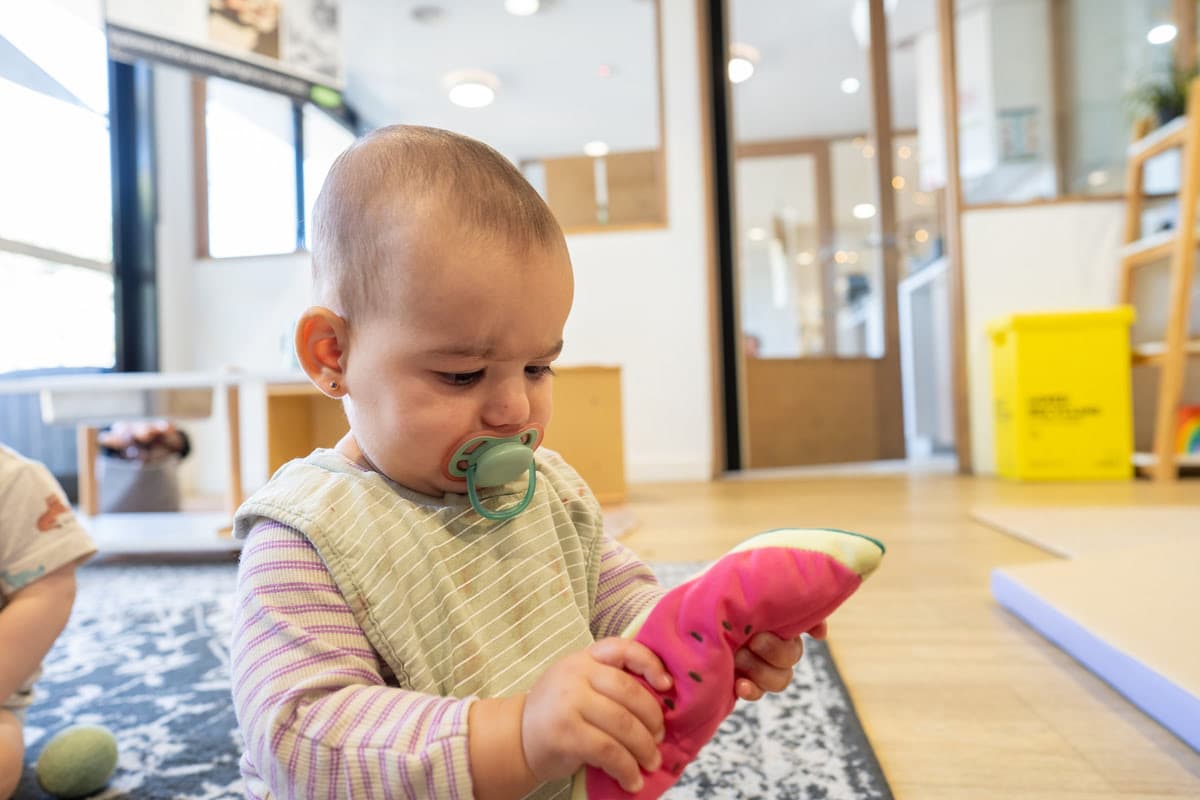Introducing Allergens to Toddlers: A Parent’s Guide to Allergy Alertness
16 January 2024

Worried your bub may have a serious allergy? What is an allergy anyway? Read on for our full breakdown of how to identify, treat, and understand allergies 👇
Food allergy rates have surged in recent decades. In Australia, 10% of infants and up to 8% of children suffer from food allergies. Likewise, allergy and anaphylaxis hospital admissions have increased by 350% over the past 20 years.
With over 170 foods known to trigger allergic reactions, it can be daunting for parents to identify and monitor these allergies for their children’s safety and wellbeing.
However, armed with a vigilant mindset and support from medical professionals, you can identify allergies early to ensure your child has a safe, happy, and healthy childhood.
What is an Allergic Reaction?
An allergic reaction is an abnormal response in the body’s immune system. For instance, if someone is allergic to peanuts and consumes peanut butter, which is considered the ‘allergen’, the immune defences mistakenly identify the peanut’s proteins as a harmful invader. Consequently, the immune system releases histamines that trigger inflammation, redness, and itching.
While most allergic reactions are mild, some are anaphylactic which can be life-threatening. Some anaphylactic symptoms include:
- Swelling (lips, face, eyes, tongue, etc.)
- Hives
- Difficulty breathing
- Wheezing or persistent cough
- Dizziness
If you suspect your child is having an anaphylactic reaction, call emergency services immediately.
How Many Allergens Are There?
While there are as many as 170 allergenic food and drinks, nine account for around 90% of allergic reactions:
- Peanuts
- Tree nuts (almonds, cashews, hazelnuts, macadamias, walnuts, etc.)
- Wheat
- Eggs
- Milk
- Sesame
- Fish
- Shellfish
- Soy

What’s Causing the Rise of Food Allergies in Australia?
While there’s ongoing debate around why allergies are rising in industrialised countries, such as Australia, a prevailing theory points to gut health. This is also referred to as the gut-allergy axis. One study argued that ‘observational findings support the notion that differential microbial exposure and colonisation in early childhood may modify risk for the development of food allergy.’
In other words, babies who are exposed to more diverse gut microbiomes through a varied diet in their early years may be less likely to develop allergies later in life.
How Can You Introduce Allergens to Toddlers?
Growing research suggests introducing common allergenic foods to babies is vital for preventing potential allergies. However, this can only be done when your child is ready for solids, which is around the six month mark.
When introducing allergenic foods, consider the following:
- Introduce all nine common food allergens by the time your child is one year old – but only one at a time. Also, wait a few days between introducing allergenic foods to observe any delayed reactions.
- If your child does have an allergic reaction to a specific allergen, stop giving them that food and immediately contact a medical professional.
- If your child doesn’t have an allergic reaction, keep feeding them that food at least twice a week. This is vital for your child’s immune systems to recognise the food isn’t harmful.
- Introduce a variety of foods, including different fats, proteins, vitamins and minerals.
- Keep texture in mind. For examples babies and very young children should not be fed whole nuts which pose a choking hazard, opt for spreads instead.

Are Babies Born with Allergies?
While some babies develop allergies in the womb, often revealed by allergic reactions to milk-based formulas, most develop them during infancy.
Additionally, while allergies are often hereditary, this isn’t always the case. Many children often develop allergies without any family history, so be mindful when introducing allergens to your baby.
How are Allergies Treated?
Unfortunately, there are currently no cures for any allergies. While research in this area continues, the most common treatments include vigilance and safeguarding by adjusting lifestyle and eating choices, often for the whole family.
If a family member has an allergy, keep the allergen out of the house entirely. For younger children, regularly discuss their allergy with them, including symptoms, triggers, and treatment – especially if they carry an EpiPen. Consistently educating and reminding your child of their allergies is essential for vigilance as you can’t always be there to monitor their food choices.
Additionally, inform all caregivers and food/drink providers of your child’s allergy:
- Childcare educators
- School teachers
- Babysitters
- Family members
- Parents of your child’s friends
- Restaurant staff
- Event caterers

Allergy Tests
If you’re experimenting with an allergenic food that a sibling is severely allergic to, make sure the allergic child is out of the house. Then, clean all utensils, plates, surfaces, and wipe your baby’s mouth and hands. Alternatively, seek out an allergist or immunologist to perform allergy tests:
- Skin prick tests: A healthcare professional will apply a range of allergens to your child’s forearm and gently prick them with a needle. If your child has an allergic reaction, a red welt will appear (these fade after an hour or two).
- Oral allergen challenge: Your child will be fed common allergens and observed by a clinical immunologist or allergy specialist in a controlled setting.
- Patch tests: While not food related, patches are placed on your child’s forearm (similar to skin prick tests) to observe their reaction to contact dermatitis. The materials tested include:
i) soaps and fragrances
ii) nickel (jewellery)
iii) chrome (leathers and certain cement)
After a few days, a healthcare professional will remove the patches to observe the results. If the patch is welted, your child is allergic to that specific material. - Blood test (otherwise known as IgE testing): This is for children who can’t have skin prick tests, or if results are inconclusive. A blood sample will be drawn and sent to a lab for testing to measure the allergy specific IgE (immunoglobulin) in your child’s body.
In conclusion, the rising prevalence of food allergies in Australia calls for heightened awareness among parents. Identifying allergens, understanding causes, and introducing allergenic foods cautiously are crucial.
And while there’s no cure, vigilance – from both you and your child – remains your first line of defence against potentially harmful allergies. By consulting healthcare professionals, educating your child, and keeping caregivers in the loop, you can create a safe environment for your child without compromising their development.
🍃 To tour one of our beautiful Centres, please click here. Otherwise, check out our website at Explorers Early Learning today!